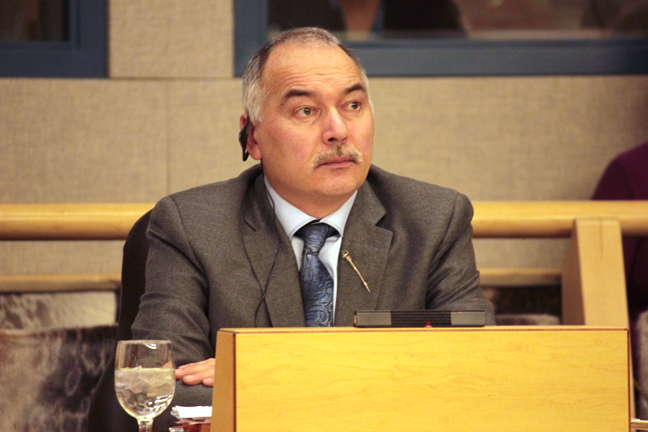Nunavut climate change body still finding its feet
As the Arctic climate gets warmer and wetter and impacts how people, and animals, live and thrive in the North, Nunavut’s new Climate Change Secretariat hopes to highlight those impacts, build homegrown capacity and increase local resilience in the face of widespread change.
At least, that’s what a Government of Nunavut news release said last November.
Iqaluit-Niaqunnguu MLA Pat Angnakak asked Environment Minister Joe Savikataaq during the Nunavut Legislature’s question period June 8 exactly what the secretariat has done since its creation.

The GN’s environment department announced in November 2016 that the Department of Economic Development and Transportation’s Energy Secretariat, and the environment department’s Climate Change Section, would merge into a new Climate Change Secretariat and be positioned within the environment department.
Savikataaq replied at first to Angnakak that the secretariat was new and that it takes time to get up and running.
“We’re still in the process of filling positions. Some had no bodies in the first place, some were filled by casuals… we’re just trying to set up shop,” Savikataaq said. “To the best of my knowledge, we have not developed any new polices yet.”
But as Angnakak was asking a follow-up question—about whether the new secretariat would eventually submit to a detailed annual report on its activities the legislature—Savikataaq got up to speed because when he returned to the microphone, he had a few details for his Iqaluit colleague.
He said the secretariat has so far:
• incorporated climate change into the Nunavut environmental assessment process;
• offered, and continues to offer, adaptation courses to government departmental staff—for example on the changing nature of permafrost; and,
• mapped permafrost in communities so local residents know where to develop land.
“These are projects that were on-going before the secretariat came up. The capabilities of the secretariat will be enhanced now that it’s gone from four positions to seven, I can’t remember the exact number,” Savikataaq said.
He added that the federal government has made money available for climate change adaptation and mitigation and that his staff are “doing our best to tap into those funds.”
Angnakak then asked Savikataaq whether the government was considering incentive programs to help offset costs for Nunavut homeowners or business owners who want to invest in energy efficient technology or renewable energy sources.
The short answer: No.
Savikataaq said the Qulliq Energy Crop. is in the process of rolling out its net metering program so that people who use renewable energy from wind, solar and other means can feed excess energy they produce into the electrical grid and offset the cost of their own energy use.
But other than that, there are no incentives, he said.
“Once the net metering is fully functional, the government may want to look at [incentive programs] but right now, we don’t offer any incentives to buy renewable energy products for the homeowner.”
You can read more about the Nunavut Climate Change Secretariat here.
June 8 was the final day of the current legislature’s spring sitting. Nunavut MLAs and ministers will return to the assembly on Sept. 12 for the fall sitting, the final one before the government is dissolved for the Oct. 30 territorial election.